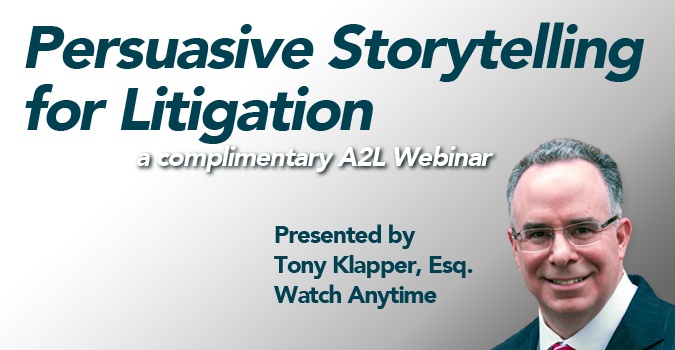One of my professional mentors had a saying: Let silence do the heavy lifting. This is good advice in many business and personal contexts. When you want to hear what another person really thinks, stop talking and wait for him to speak. Let him finish his statement, and don’t “rescue” him by interrupting him.
Two thousand years ago, a rabbi in the Talmud said, “All my days have I grown up among the wise, and I have not found anything better for a man than silence.”
This principle is still valid, and it applies well in the context of communications during trial between attorneys, juries and judges. I’ve noticed that many trial lawyers all too often believe they have too much to say in too little time and are obsessed with pressing a great deal of information into the hands of the fact-finder. But endless words are not always your friend if you want to be a successful persuader.
Recently I observed an opening statement in which a trial lawyer applied these principles perfectly. Her client needed to make a point about the existence of ongoing communications between two parties over the course of a decade. This point was so important that it warranted special attention during the preparation of the opening statement. So we designed a litigation graphic that focused on these communications. We made sure that these timeline events rolled out slowly to the jury, slowly enough that the brief periods of silence between them caused some discomfort.
This tactic noticeably changed the pace of the opening statement. It set a tone that forced the jurors to pay attention. And it wouldn’t have worked as well if the lawyer hadn’t presented her statement quietly and at a slow pace. As this masterful trial lawyer went on with her statement, the room audibly went silent and the jury paid attention. This was an emotional moment that focused the jurors’ minds on the fact of the regular ongoing communications – an essential part of the case for this lawyer’s client. This lawyer let silence do the heavy lifting.
We have done this before, in other contexts. In an airline merger case, we scrolled a list of past airline bankruptcies before the jury in a way that was slower than usual – and noticeable. The message was that the airline industry had long been suffering through a dire financial situation and that the merger should be allowed to go through to reduce further bleeding.
In all of these cases, the key element is that a skillful trial lawyer can plan her exhibits slowly and carefully and let silence speak loudly.
Other A2L free resources about litigation graphics, timelines, and connecting with judge and jury include:
- 3 minute video: Three top trial lawyers discuss persuasion using litigation graphics
- A Must-Have Complimentary 50-page Guidebook for Those Who Use Timelines to Inform or Persuade
- 16 PowerPoint Litigation Graphics You Won't Believe Are PowerPoint
- Connecting With Jurors by Turning Off Your Screen
- 3 Excellent Ways to Use “Top-Bottom” Timelines in Trial
- 5 Trial Graphics That Work Every Time
- 5 Essential Elements of Storytelling and Persuasion
- How to Make PowerPoint Trial Timelines Feel More Like a Long Document
- 4 Types of Animation Used in the Courtroom
- Why a Graphically Immersive Trial Presentation Style Works Best
- Stop Using Bullet Points
- Why the former President is a Master PowerPointer
- The Redundancy Effect
- Search our site for just what you need
- 12 Ways to Eliminate "But I Need Everything On That PowerPoint Slide"
- 6 Trial Presentation Errors Lawyers Can Easily Avoid
- Trial Timelines and the Psychology of Demonstrative Evidence
- Don't Be Just Another Timeline Trial Lawyer
- The 12 Worst PowerPoint Mistakes Litigators Make






Leave a Comment